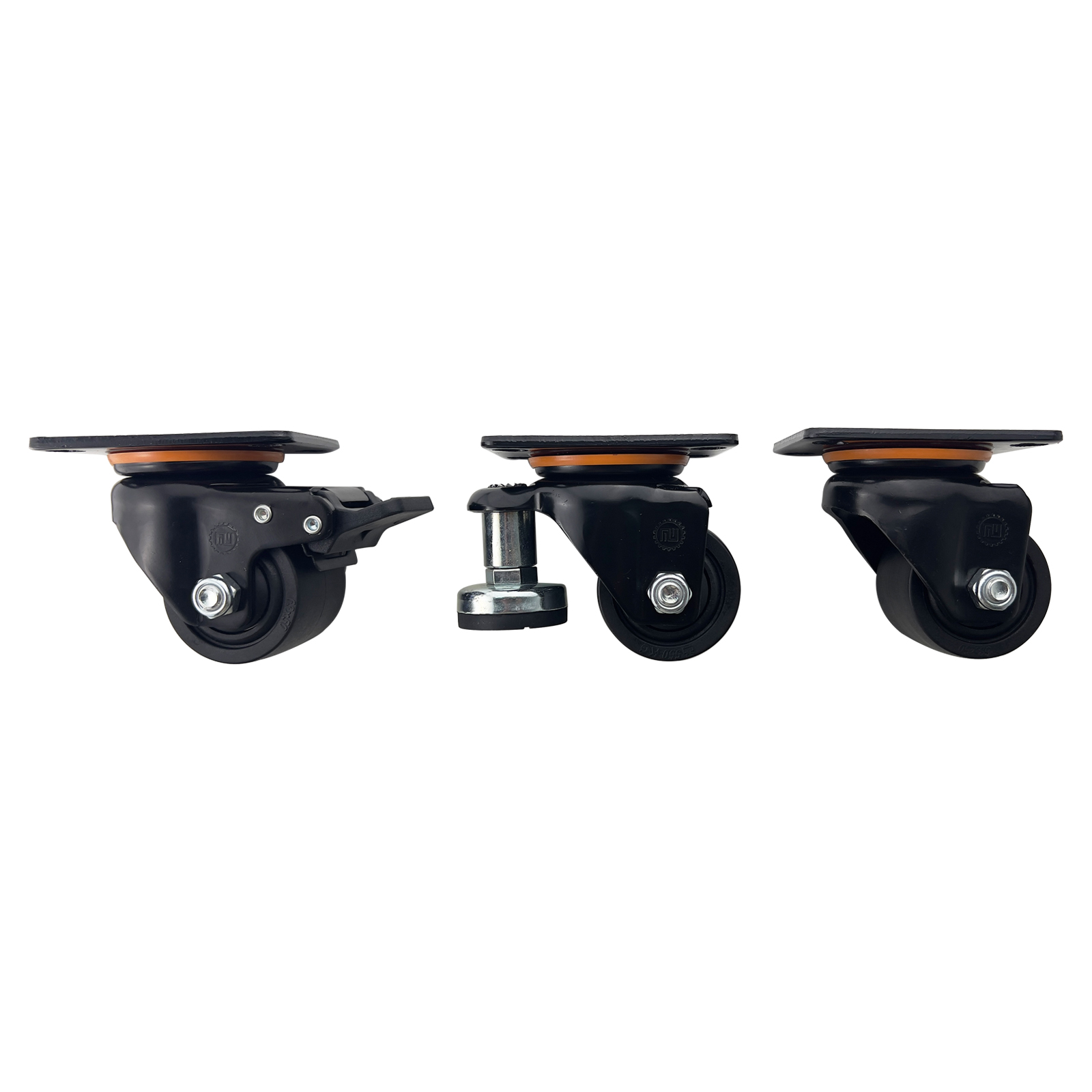As industries evolve to meet the demands of efficiency, automation, and eco-conscious innovation, even the smallest components are seeing radical transformation. One such unsung hero of industrial and commercial design is the caster wheel.
In 2025, the global caster trends are moving beyond traditional functionality. From embedded intelligence to sustainable manufacturing and whisper-quiet performance, casters are becoming smarter, quieter, and greener. This article explores the top caster innovations and how they’re shaping mobility across multiple sectors.
The Rise of Smart Caster Wheels
Technology is reshaping even the most basic hardware. Smart caster wheels—those embedded with sensors, connectivity, and data-gathering capabilities—are emerging as essential components in Industry 4.0 environments.
These advanced casters are being deployed in:
● Automated Guided Vehicles (AGVs)
● Autonomous Mobile Robots (AMRs)
● Smart hospital beds and trolleys
● Inventory carts in smart warehouses
Key features include:
● IoT integration for real-time tracking and diagnostics
● Load monitoring to prevent equipment overuse
● Predictive maintenance alerts to reduce downtime
● Bluetooth and RFID technology for logistics visibility
The ability of smart casters to communicate with cloud-based systems is changing how we manage mobility assets. Expect to see even small to mid-sized businesses adopt connected caster solutions to increase productivity and safety.
Silent Moves: The New Acoustic Standard
Silence isn’t just golden—it’s required. Whether in hospitals, libraries, hotels, or upscale retail spaces, the demand for low-noise casters continues to rise. These wheels reduce vibrations and rolling noise by utilizing:
● Soft rubber compounds
● Thermoplastic elastomers (TPE)
● Precision ball bearings
This quiet functionality is especially critical in:
● Healthcare environments, where patient comfort and sleep quality are paramount
● Corporate offices, where excessive noise can disrupt workflow
● Luxury retail, where ambiance enhances customer experience
Modern silent caster wheels no longer sacrifice performance for noise reduction. Thanks to innovative materials and engineering, many now support high load capacities while maintaining smooth, quiet rolling across various surfaces.
Sustainability Takes the Lead
The environmental impact of industrial components has become a major concern, and caster wheel manufacturers are taking bold steps to address it.
Sustainability isn’t a marketing tactic—it’s a competitive necessity. Eco-conscious businesses are seeking:
● Casters made from recycled or biodegradable materials
● Non-toxic coatings that don’t emit harmful VOCs
● Longer-lasting wheel designs that reduce waste
● Carbon-neutral supply chains and packaging
● Sustainable casters are being adopted in:
● Warehouses focused on green logistics
● Hospitals aiming for LEED certification
● Manufacturing plants with ESG mandates
Green caster solutions aren’t just good for the planet—they’re also cost-effective in the long run. By investing in durable, eco-friendly caster wheels, companies reduce the frequency of replacement and enhance overall operational efficiency.
Industry-Specific Caster Innovations
The “one size fits all” era of casters is over. In 2025, industry-specific applications drive innovation in wheel design and function.
Key sector trends include:
● Healthcare: Antimicrobial casters with total-lock braking systems
● Food & Beverage: NSF-certified, corrosion-resistant casters that meet hygiene regulations
● Retail: Compact swivel casters with low profile and smooth gliding for display units
● Heavy Industry: Heat-resistant, high-load casters for equipment transport
● E-commerce logistics: Lightweight, ergonomic caster designs for speed and precision in fulfillment centers
This move toward tailored caster engineering allows businesses to meet strict safety standards and improve worker comfort without compromising mobility.
Modular and Custom Caster Solutions
Another rising trend in 2025 is modular caster configuration. Customization is no longer limited to bulk orders—manufacturers are offering online tools to design:
● Wheel material (rubber, nylon, polyurethane, TPE)
● Mounting types (top plate, stem, bolt hole)
● Brake mechanisms (directional lock, total lock)
● Load capacities and tread width options
The result? Businesses can now easily match their casters to exact environmental conditions and functional requirements, whether it’s for heavy-duty mobile shelving or delicate medical equipment.
Custom caster solutions not only improve performance but also reduce injury risk, improve ergonomics, and prolong equipment life.
Conclusion: Small Component, Massive Impact
From automation to acoustics, and sustainability to smart technology, caster wheels are stepping into the spotlight in 2025.
These small but essential components are enabling:
● More efficient workflows in logistics and manufacturing
● Quieter and more comfortable environments in healthcare and hospitality
● Eco-conscious operations aligned with global sustainability goals
● Smart tracking and data analytics through IoT integration
For procurement teams, facility managers, and product designers, keeping up with these evolving caster trends is not just a technical detail—it’s a strategic decision that affects productivity, safety, and long-term ROI.
